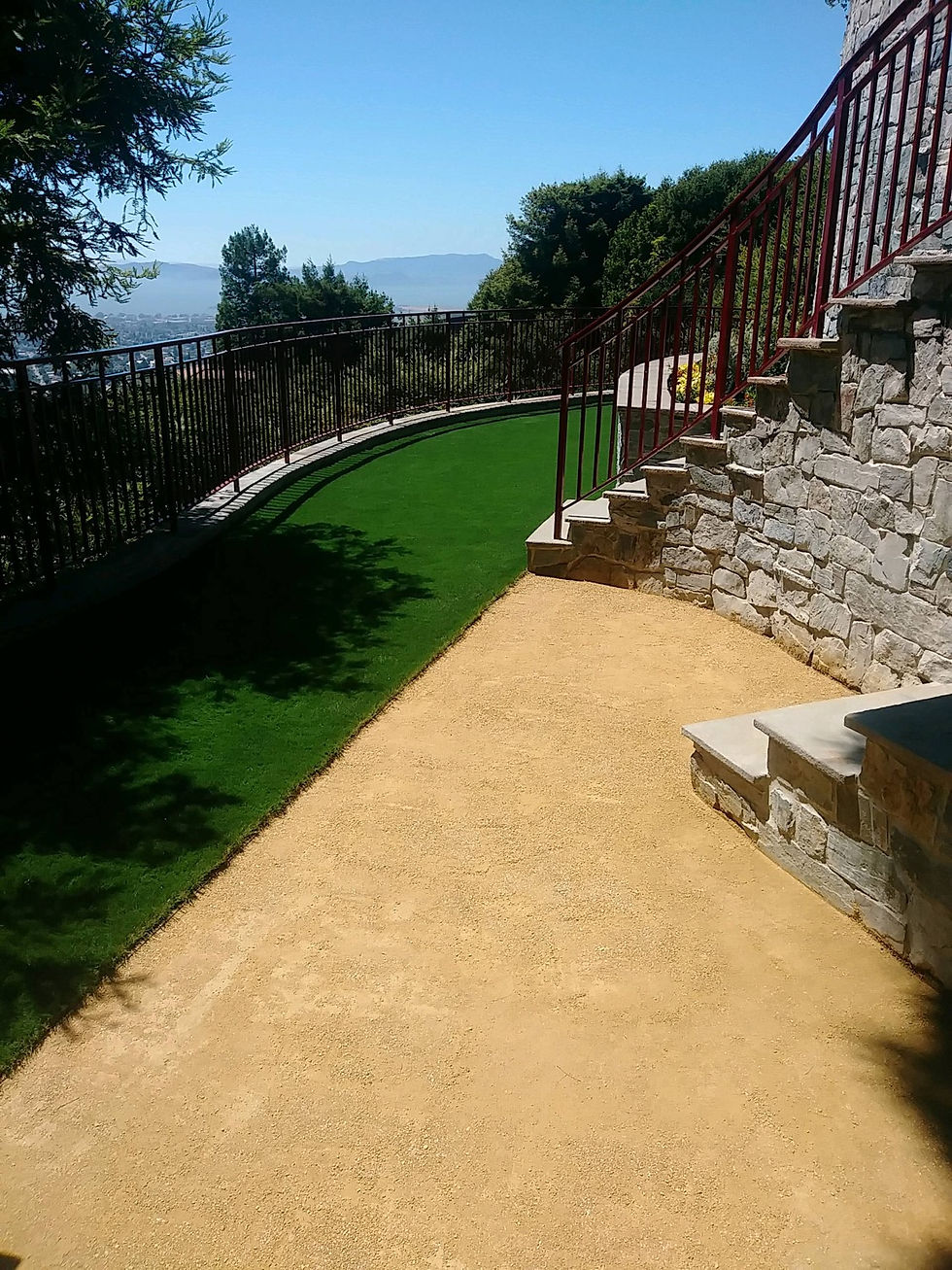Retain and Contain (walls and edgers)
- Jesica Zebouah

- Feb 9, 2023
- 2 min read
Landscapers think a lot about reshaping and leveling the land when planning a new project. We consider slopes, hills, humps, bumps, tree roots, sloping towards the house, away from the house all as components we may want to change. To do this will usually involve both retaining land with walls and containing loose materials around soft set paths, patios and turf.

Retaining walls are the most common type of wall we build in the landscape. They are different from a regular wall in a house because they receive pressure horizontally verses a wall in a house that receives pressure vertically. This horizontal pressure comes from dirt that is behind a retaining wall and expands when wet. Retaining walls make it possible to level out slopes and create usable areas for plants, paths and patios. Have you ever seen a leaning retaining wall like these?


These walls are failing for a few reasons, but mostly because they weren't built correctly. They didn't account for the pressure behind them that happens when soil is wet and expands. To offset this pressure, it's important to backfill with crushed drain rock that doesn't expand when wet and creates a barrier between the wet soil and the wall. It's also necessary to build at the base (bottom of the wall) with enough depth to handle the horizontal pressure, including using posts that are deep and large enough and are appropriately attached to the wall they're supporting.
We contain loose materials with various edger options when we install using a soft set method. Soft set, rather than hard set in concrete, means we have a loose material that has been compacted either naturally using crushed pebble or with a compacting tool, to remove air that keeps it's shape and won't erode out. We need edgers around turf (live and artificial), patios and paths that aren't set on a concrete base. Edger material can be anything that contains what is in between, the most common are bender board, aluminum, steel and stone edgers.


Edger should separate loose materials but you shouldn't see more than just the top of it and even that should get covered over time. Here is an incorrect use of edger, it's flimsy and unattractive:

So that's retaining and containing 101. There's soo much to say about it in the landscaping, this may be the beginning of my new favorite topic!
I'll end with this image below that shows a wood box and stone steps with pebble treads. Notice how the stone steps are serving to contain the loose pebble and the wood box is also a retaining wall holding up the land. The dry stacked rock on the right is also retaining that level and containing the pebble:

Enjoy February! Next post, I hope it's spring with new growth and warm sunshine....








